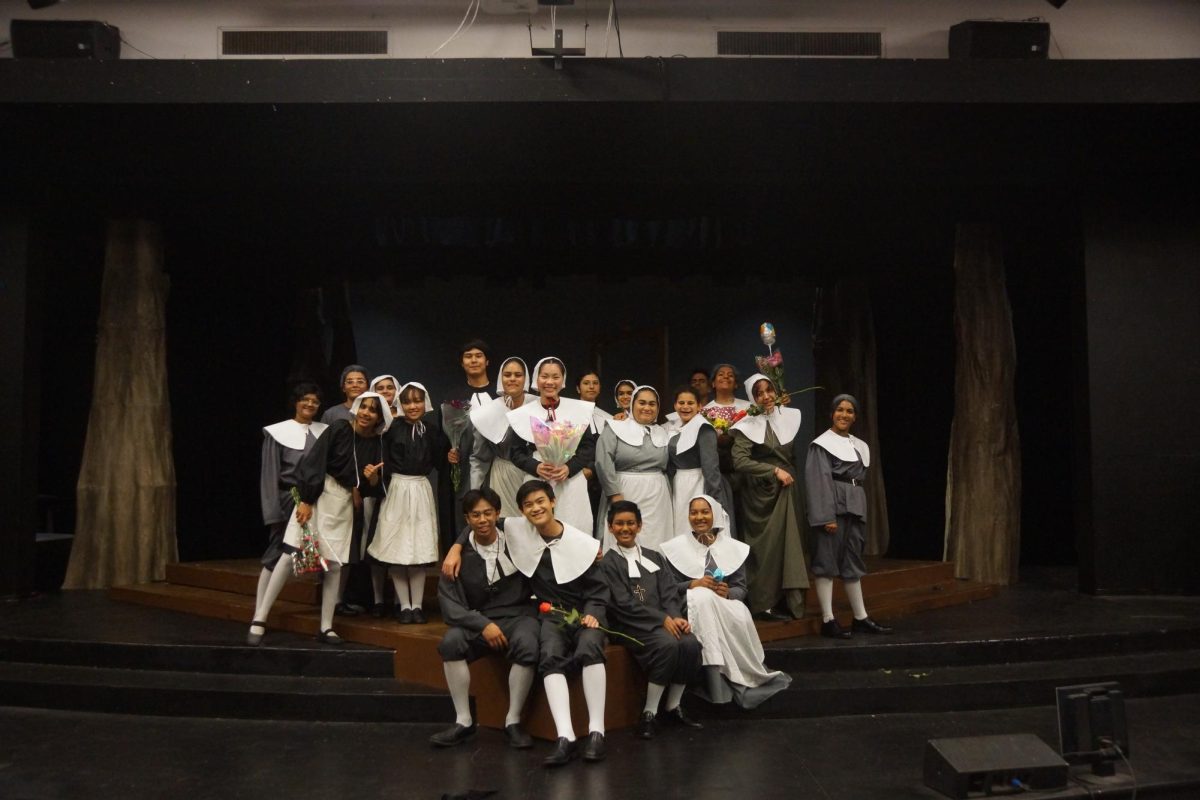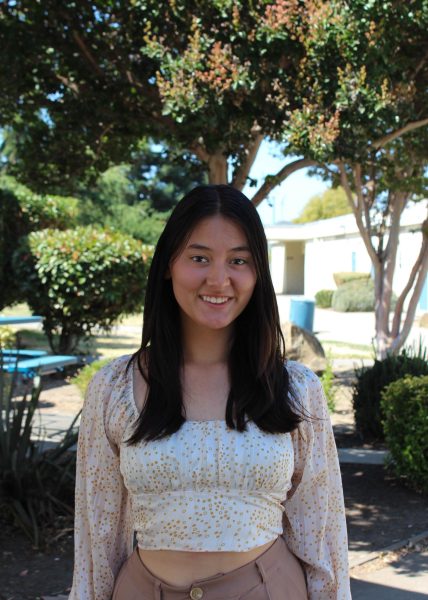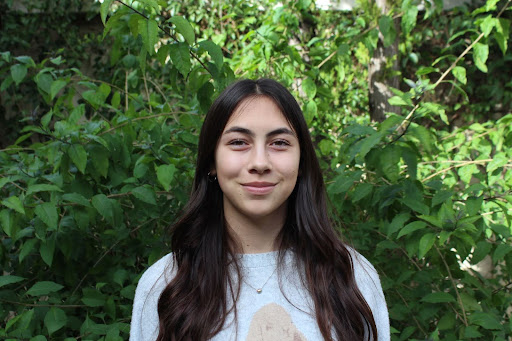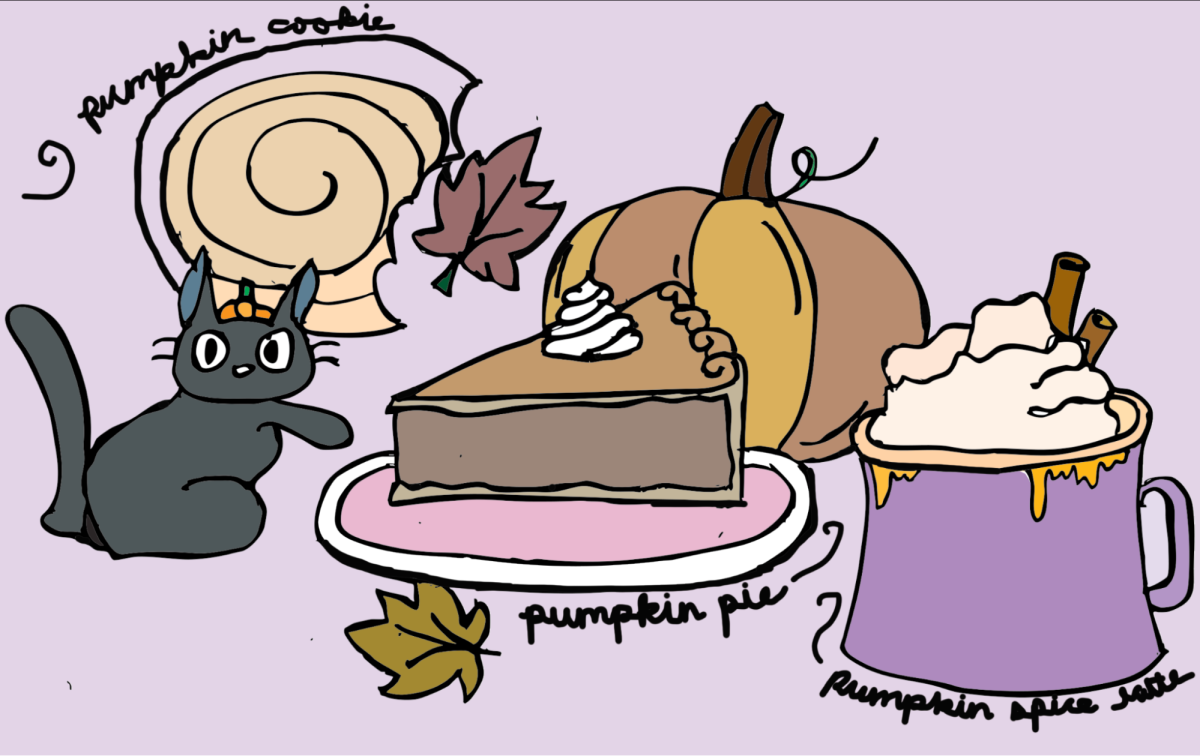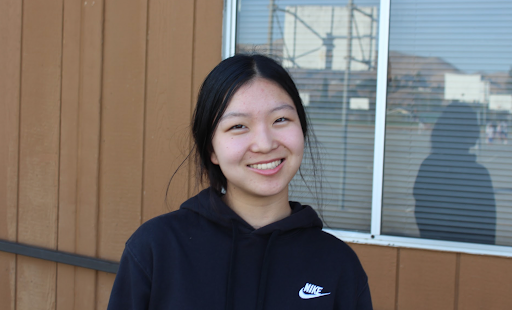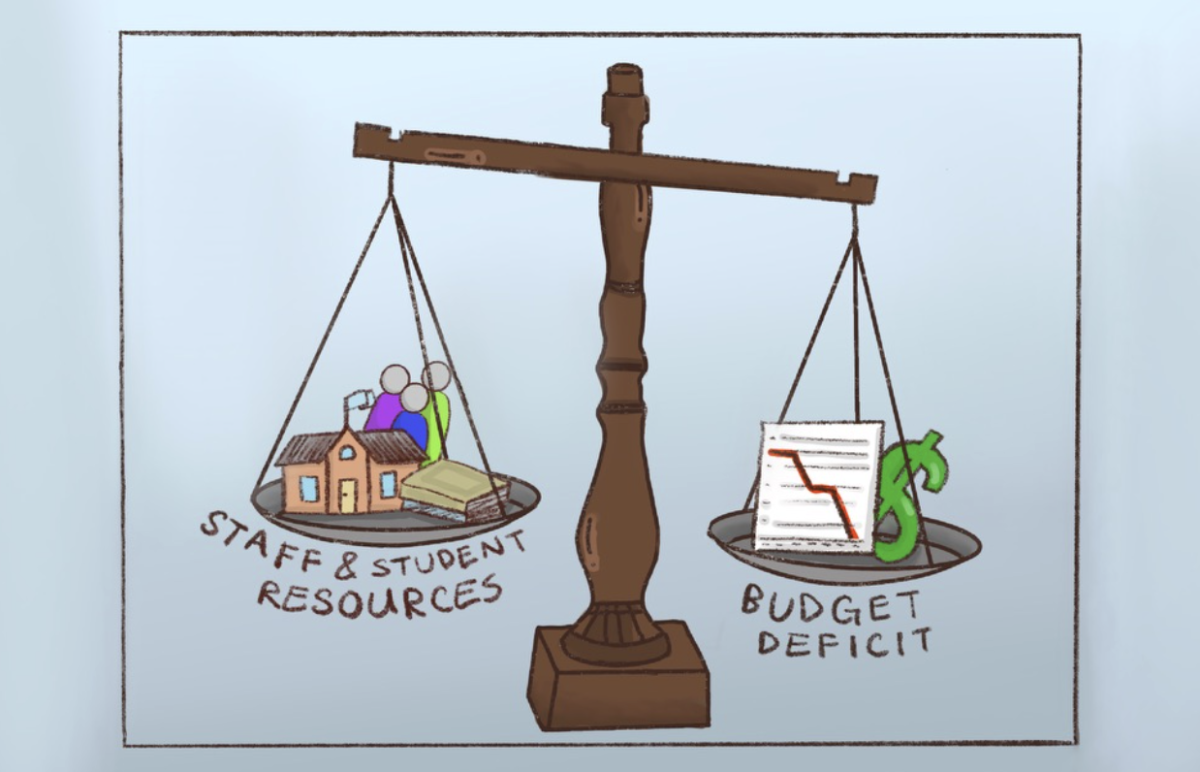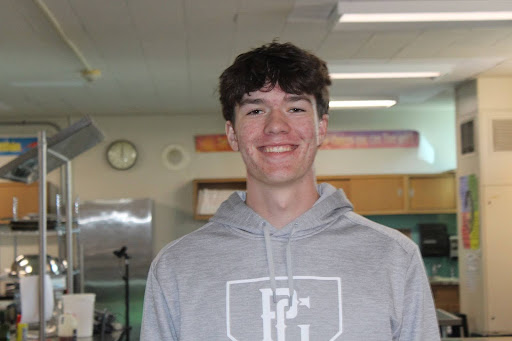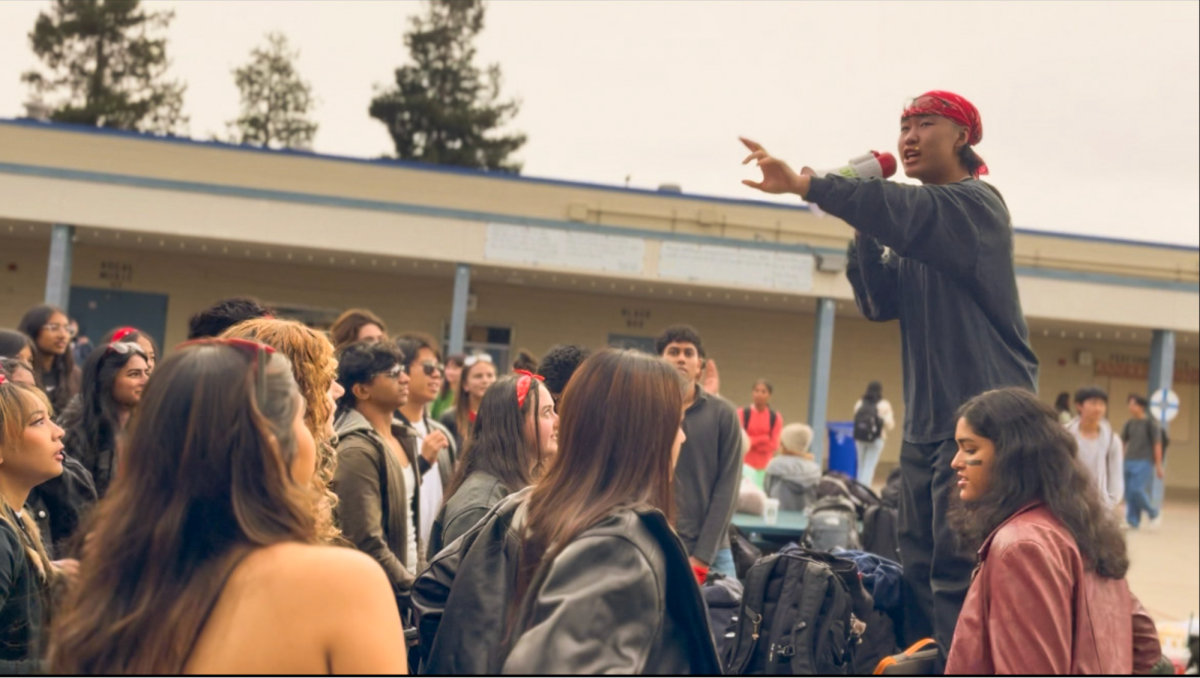Overview
Irvington Conservatory Theater (ICT) hosted “The Crucible”, this year’s annual fall play which ran from December 2nd to December 9th. The show is a tragic play with a more serious tone compared to previous ICT productions. Yet despite this challenge, the cast, crew, and staff pulled through – creating a dramatic production that captivated audiences.
The Crucible follows the town of Salem as Abigail Williams starts a string of accusations of witchcraft, causing a frenzy that takes over the town. The stakes are high as paranoia and unfounded accusations of witchcraft lead to dozens of hangings and every choice becomes a matter of life and death.
Amid this pandemonium, John Proctor, with whom Abigail Williams has been having a torrid affair, decides to speak out about the false accusations Williams has been making, reveals his infidelity to the piously religious town, and decides to die for his morals instead of adding to the injustice.
“I think my favorite moment of the play is when John Proctor says in the very last scene ‘because it is my name, and I can’t have another’”, shares Mr. Ballin, the head director of the production. “That idea almost moves me to tears because it’s a man who’s trying desperately to hang on to himself. And eventually, he does, you know, with his tragic end. It’s very dark, but in some ways, it’s a happy end… he has himself now. He has his peace.”
Preparation and Rehearsals
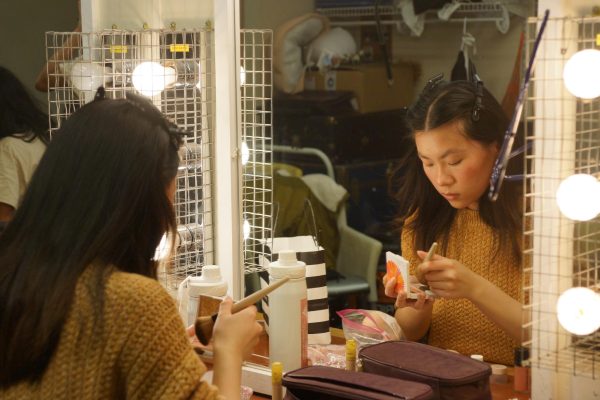
Preparation for the show first began at the end of the last school year as the ICT decided which shows to do for the next school year. As a part of this decision-making process, Irvington’s Performing Arts Club (PAC) submits the productions that students would like to be put on to Mr. Ballin and the other staff, which they take into consideration. However, when choosing what productions to do, the feasibility of the show and the preferences of the staff are also taken into account.
“We have a lot of considerations that students don’t know about,” shares Ballin, “For example, some shows are currently on Broadway and the rights aren’t available, some shows are too costly to produce, and some shows are inappropriate. And since me and the other ICT staff have to live with the project for a long while, we want to do something that we like as well.”
Due to these many factors, the productions for the year are often not from the list proposed by the PAC. However, this year both the fall play “The Crucible” and the spring musical “The Addams Family” were on it, making both show student favorites.
Rehearsals for The Crucible began back in September, and the show was double-cast due to the high number of qualified actors who auditioned. Double-casting had been done in the past for ICT musicals for that same reason and because of issues with COVID-19. This year’s two casts were nicknamed A-corn (the opening cast) and B-corn (the closing cast).
Because of the double-casting, the actors were able to switch off with the A-corn cast rehearsing one day and the B-corn cast rehearsing the next. Some roles, however, were not double cast, such as the main role of John Proctor played by Daniel Sadsad.
“Usually for my previous plays and musicals, I’ve been able to balance it well,” shares Sadsad, “especially since I was taking non-honors classes and the characters I played were closer to home, so I was able to get into character more quickly before. But now in junior year with both AP classes and this difficult role as John Proctor, I’ve been struggling, both academically and mentally. It’s been a struggle because Proctor’s such a hard role. I’m not used to being mad all the time and being mean to people, so this is definitely my hardest role yet, but luckily I can finally start focusing on more academics now since we’re nearing the end.”
Mid-way through rehearsals, however, Mr.Ballin had to take an emergency leave due to health reasons. Without Mr.Ballin, ICT called in Salvador “Chava” Suarez – a director currently studying at Ohlone – who directed rehearsals while Mr.Ballin was out and continued after his return as the show’s co-director.
“He’s not just a student director, he’s really a co-director,” shares Mr.Ballin, “With his attention to detail and the way he communicated notes, he was fantastic and we worked very well together. He even fixed some of my staging. When I got back, I could leave some of the notes and acting stuff to him while I took care of the production.”
The Performance
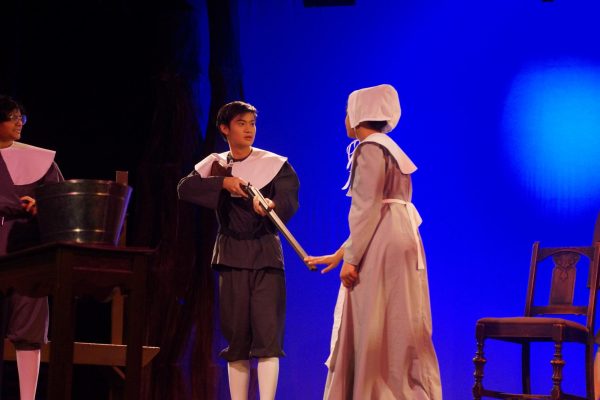
The more serious tone of the play made it difficult for many actors to adjust and caused many students to grow a lot as actors as they learned about how to raise the stakes for their characters and adapt to both the historical setting and intense plot.
“I kept telling them to overact and pretend like they’re overreacting,” recounts Mr.Ballin, “Overacting isn’t being too big – it’s being big without being real. You have to have the objective to go along with that emotion. It’s when there’s nothing behind the action that it looks funny,, and because everything’s life and death in the show, high emotion is very appropriate.”
In addition to the high emotion, actors also challenged themselves to play more complex characters.
“Mr. Ballin said my character is a weasel,” shares Rahi Vinod (11) who plays Reverend Paris “It was just fun to be a character who wasn’t like a little brother because I did little brother roles for previous productions. It wasn’t the role I originally auditioned for, but I feel like my character has a big chunk in the story.”
“I have to cry a lot,” Anjili Hosagandi (10) brought up, who plays Mary Warren, “which is kind of weird because crying on stage is awkward, but you know, it was kind of cool because the character has a lot of different emotions and different scenes.”
“So many of the kids, like so many, many more, have had huge growth as actors over the course of the rehearsal process,” shares Ballin, “And I’m very pleased with it overall because I mean, whatever anybody else thinks of the play, I know how hard it was and how hard this cast worked. And I’m very pleased with the result in terms of their development, and since this is an educational institution, that’s what’s most important”
Backstage
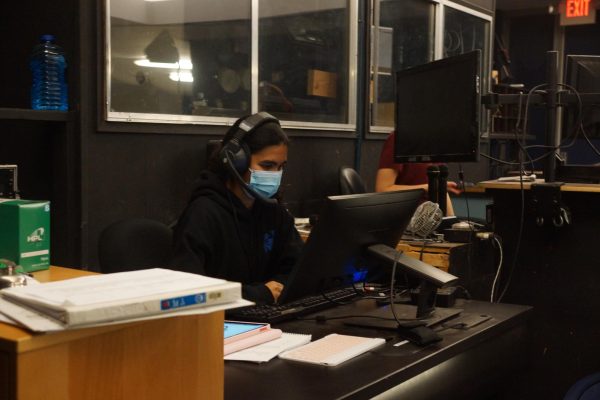
(Katelyn Shen)
For The Crucible’s production, the Stagecraft class created the stage and also works as backstage crew, managing lighting, props, and moving the set during the performance.
This year, the set was relatively simple due to the severe nature of the play, consisting of a lot fewer moving parts than previous productions. The focus of the set was the main stage platform consisting of four squares that formed a diamond shape, with the height of the squares increasing towards the back of the stage. As this play consisted of bigger stationary parts that needed to hold more weight, the skills required to create the stage were different too.
“I’ve actually learned a lot about drilling and stuff because I’ve never used a drill before this set”, recounted Sundus Pathan (10), stagecraft member and prop master, “And it was not as crazy as I thought it would be.”
Despite being a simpler set, the set for “The Crucible” still required the crew to both learn the skills to create it and put in the time and effort to complete it, keeping the group on a tight deadline as they built both the Crucible set and worked on production for the annual immersive haunted house Valhaunted..
“Overall, the end product was good, but the building process was kind of rushed in the end only because we were spending time doing lessons and stuff in the stagecraft class,” stage manager Max Fiorelli (11), summed up.
On top of being an educational class where members get to learn how to use various tools and participate in the creation of the production, the many hours spent working on sets and working the Crucible backstage caused stagecraft members to form a strong community.
“It’s a really inviting community,” Pathan (10) emphasized, “As soon as I joined, everybody started talking to me. And I was like, oh, that’s so awesome, and I became friends with all of them.”
Costumes
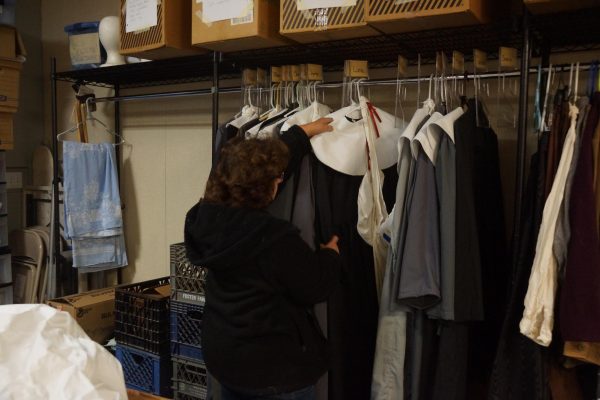
(Katelyn Shen)
Similar to years prior, the costume department was mostly staffed by parents of former students, though student volunteers came in to help from time to time. Unlike previous productions which had more elaborate costumes, The Crucible had simpler costumes to suit the play’s setting in late 17th century Salem and its overall more dramatic and serious tone.
“Normally the costume department has to come in every day to work on costumes,” shares Josephine Burns (12), a student volunteer for the costume department, “but for this production, we only came in twice a week on Thursdays and Fridays and it was still pretty easy to meet deadlines.”
Volunteers working in the costume shop were able to learn many technical skills related to costumes such as tracing, sewing, and cutting fabric. As a student volunteer, Burns was also able to grow closer to other members of the costume department.
“I wouldn’t want to run a costume department on my own, since I think it’s very difficult to do without help, but I really liked working in the costume department. I learned a lot about the adult volunteers and their lives, including how their kids grew up and stuff, and I would like to work with a costume department again.”
Conclusion
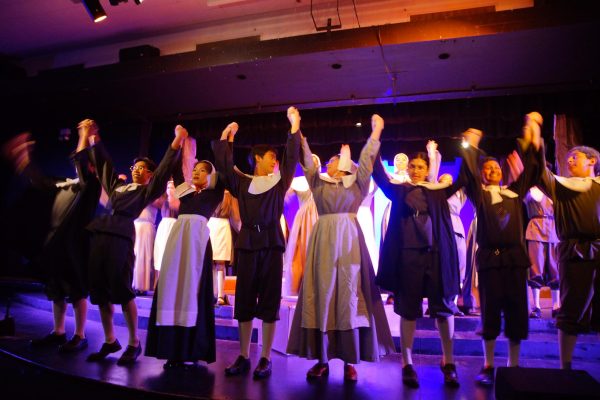
Choosing student favorites certainly proved to be a great choice as the dramatic show proved successful, with a high turnout and great reactions from the audience.
“When I first did The Crucible back in Washington,” reflects Ballin, “there was a lot more excitement around it than I thought. And it seems to be repeating itself now. A lot of people seem to really enjoy it and I think it’s going well. I think it’s something about the issue – the lying, the witchcraft, the courtroom drama, and the high emotion that I think really appeals to teenagers.”
As the performers grew in acting skills and pulled off a well-rounded performance that captured the emotions of their roles, the group was able to develop a close community making the demanding preparation a lot of fun. Backstage, the group enjoyed joking around as their characters and were able to develop a strong sense of community.
“Every time we finish the play, and we go outside to greet everyone, everyone’s just screaming, like just screaming so loud that like, I’ve never seen that before,” Sadsad recalled, “Everyone is just so excited. Every time we do the play backstage, it’s just fun.”
“During the show,” continues Ballin, “other than some funny moments, there’s complete silence from the audience. There’s sometimes an occasional gasp, but it’s complete silence during the show and then an eruption after each scene. Especially at the end of it. I mean, they were cheering like they were at a football game. That I didn’t expect from this show. It was difficult, but you know, I’m overall very pleased with it.”


